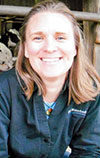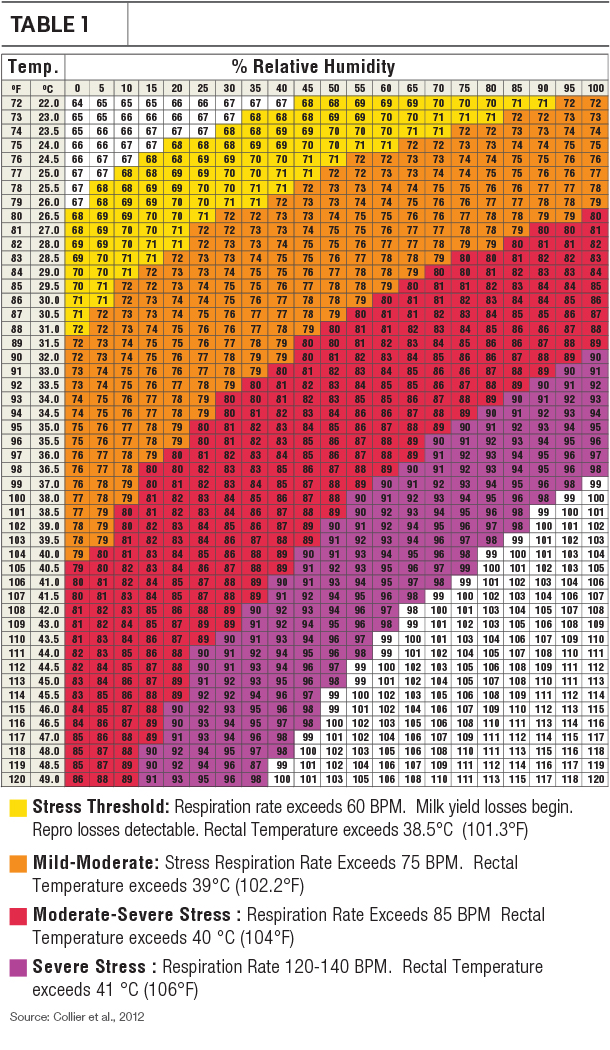As you’re working to improve cow comfort on your dairy, keep in mind what’s comfortable for you is not always comfortable for your cows. Dairy cows experience mild levels of heat stress when the temperature index is as low as 72ºF (see Table 1).
No matter how much we’d like to, no one can hide from the heat. Misters, fans and plenty of drinking water all help reduce heat stress. We move air above the stall, and some even provide a light misting of water over the stalls. You want your cows to spend as much as 12 hours per day lying down in their stalls, but as daytime temperatures rise, cows often stand more to help them cool off. If the temperature of their stall bedding surface is adding to their heat stress, they’re even more likely to spend time standing. As heat stress intensifies, milk production declines, breeding cycles are missed and lameness rises.
Click on the table below to view it in more detail.
The study
Curious, last summer our team visited several farms to test the different temperatures found with the different types of stall bases. Using a thermal (infrared) camera, we were able to capture data in a more visual manner, allowing us to clearly see how the cows’ body heat transferred to the bedding material used. All photos were taken when the outdoor temperatures were between 75 and 90ºF, using the same thermal camera.
Cows were gently coaxed to get up, and the photos were immediately taken. The hotter the surface, the more yellow and orange the image appears. The cooler areas are purple and black. All the photos use the same temperature key, so the colors represent the same temperature on all photos (Figure 1).

Observations
Flat cow mat
As Photo 1 shows, the foam/rubber-filled mattress concentrates the heat under the cow. The temperature beneath the cow was 8.1ºF warmer than the outside temperature, which means the cow was not feeling any cooling from below. Mats rely on foam or rubber fillers for comfort, adding layers of insulation between your hot cows and the cool concrete base beneath them.
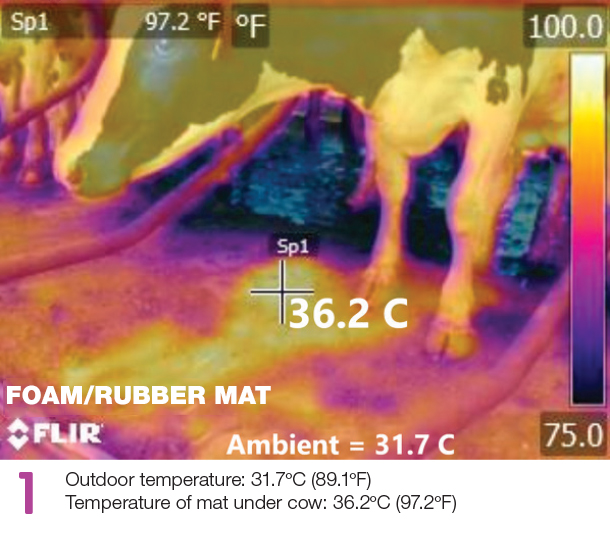
Manure solids
Manure solids create heat as part of its natural composting process, which adds heat beneath the cow, as shown in Photo 2. The temperature under the cow in the manure solids was 23.1ºF warmer than the outside temperature.
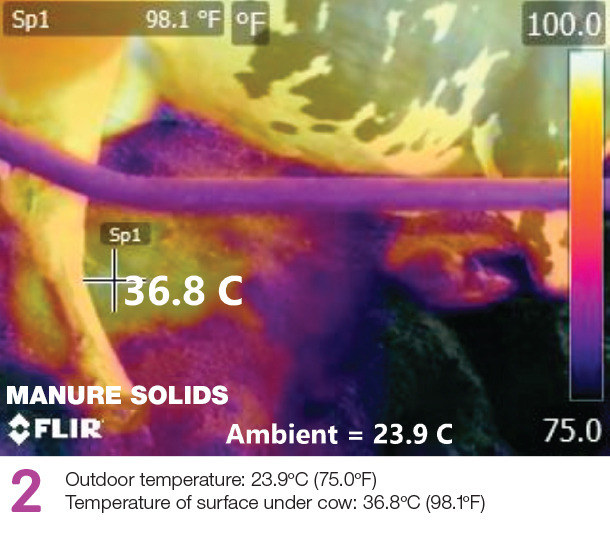
Sand
Sand is considered a natural thermal insulator, so heat concentrates beneath the cow (Photo 3). The temperature beneath the cow was 6.3ºF warmer than the outside temperature. This means while the cow’s body heat can transfer to the relatively cooler sand, the heat stays concentrated beneath her, lessening the cooling relief she needs. If a cow “digs” to find cool sand, it creates a stall management challenge, as well as exposes her to the dirty sand layer at the bottom of her stall.
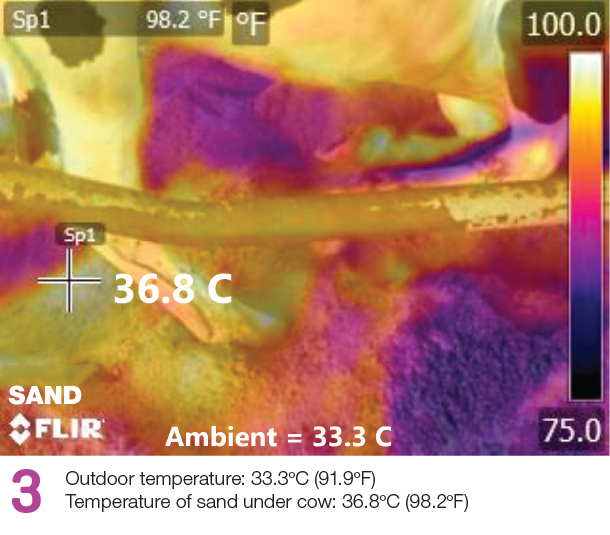
Dual waterbeds
With dual waterbeds (without a foam layer, Photo 4), the temperature under the cow was cooler than the outside temperature at 84.1ºF. During hot weather, the ground temperature in the barn should generally be around 50ºF, and that cool temperature means the concrete stall base should be similarly cool. The water in the waterbeds helped moderate the cow’s temperature, allowing her body heat to dissipate throughout the entire volume of the two chambers and transfer to the cooler concrete base.
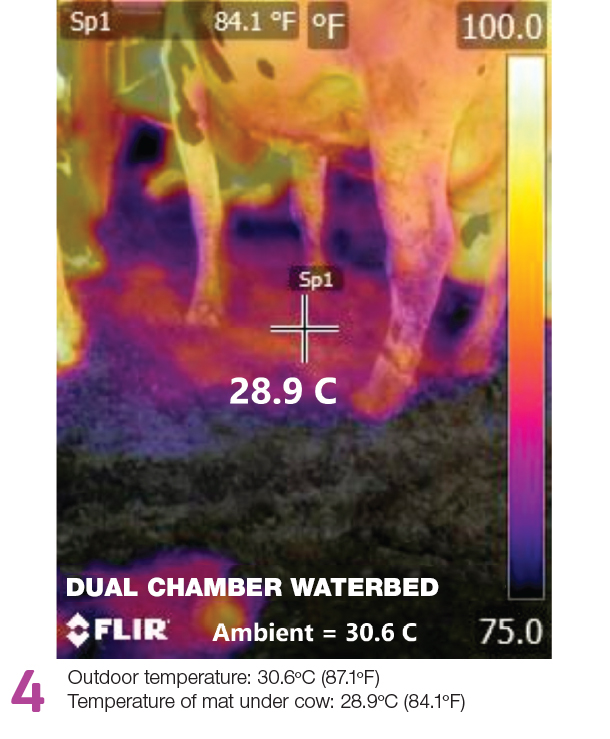
What are your cows lying on? What is the temperature beneath them? Summer is here, so it’s time to take on the heat with a cow comfort plan that includes cooling. What role do you think stall temperature plays on your cows’ comfort, and are you losing performance and profits because of it? ![]()

-
Amy Throndsen
- Director of Business Development
- Advanced Comfort Technology Inc.
- Email Amy Throndsen
